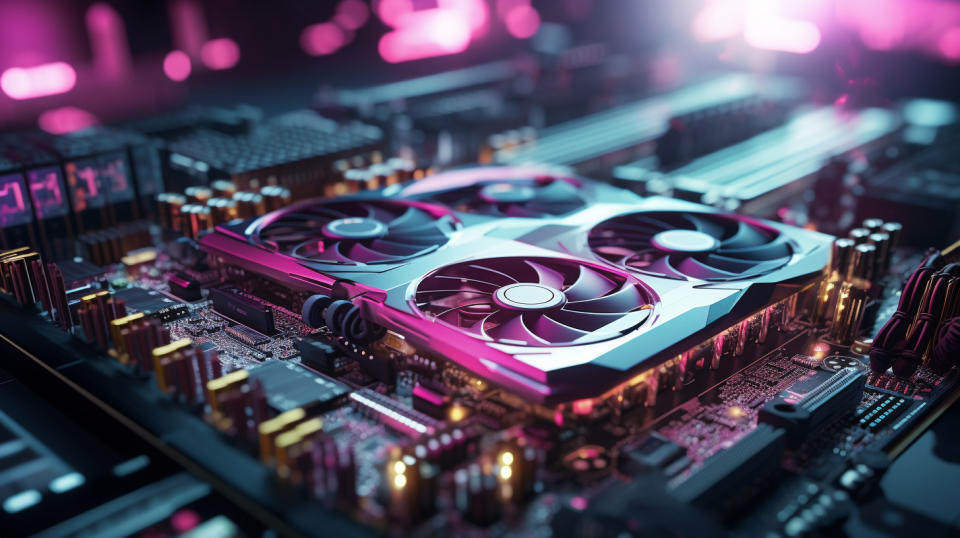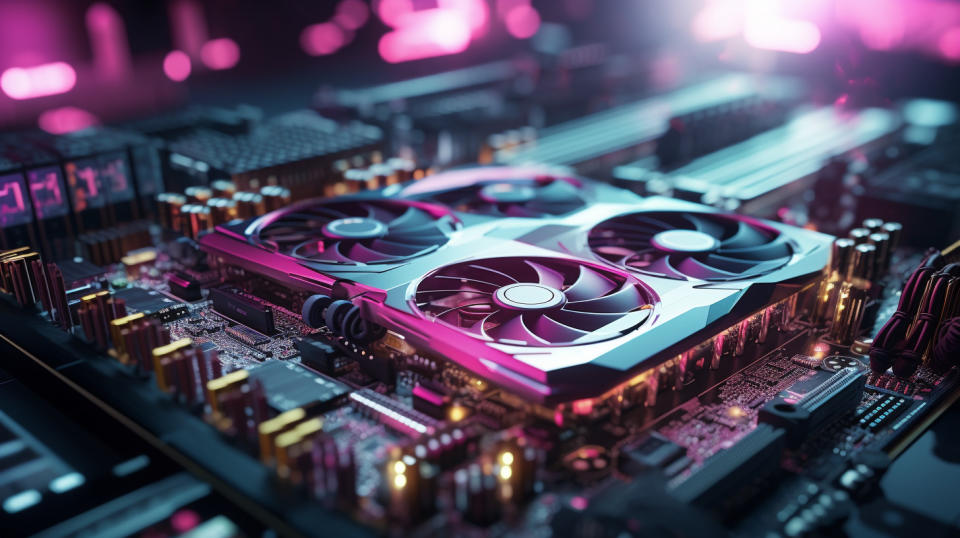We recently compiled a list of the 7 Best Fast Money Stocks To Buy According To Hedge Funds. In this article, we are going to take a look at where NVIDIA Corporation (NASDAQ:NVDA) stands against the other fast money stocks.
As the financial world grapples with shifting economic indicators and political uncertainty, insights from leading experts offer a crucial perspective on what lies ahead. With inflation showing signs of easing and the Federal Reserve signaling a likely rate cut, the focus now shifts to earnings performance and broader economic trends. Adding to this complexity are political developments, such as the possibility of a Republican sweep.
The latest June 2024 inflation report revealed a softer-than-expected outcome, causing varied reactions across major stock indices. Initially, futures surged in response, but have since fluctuated. Currently, the Dow is showing gains, the S&P is up slightly, and the NASDAQ is just below the flatline. Inflation dropped by a tenth of a percent month-over-month, contrary to economists’ forecasts of a rise.
Chris Harvey, Head of Equity Strategy at Wells Fargo Securities, and Mike Feroli, Chief U.S. Economist at JPMorgan, shared their perspectives on the current financial situation in an episode of CNBC’s Fast Money. Chris Harvey is cautious about the concept of market rotation due to ongoing uncertainties about earnings. While he doesn’t oppose rotation, he pointed out that investor confidence is still shaky.
“That’s right. We’re not against rotation; we’re just waiting for more clarity. Many investors are uncertain about earnings. Until we see a situation where companies don’t go down on bad news, we won’t be fully convinced about the rotation. We want people to believe that numbers will improve and that things will get better. However, right now, bad news is bad news, and that suggests the rotation may not be sustainable.”
In contrast, Mike Feroli discussed the anticipated rate cuts. He believes that the Fed is likely to lower rates soon due to its more aggressive stance. Feroli suggests that the economy is weaker than some might think, which supports the expectation of rate cuts. He noted that we have probably reached the peak for interest rates and that future attention will shift to earnings performance.
Feroli also explained why he updated his forecast to September. This change is based on recent CPI data showing significant inflation drops over the past year and a rise in unemployment. He expects the Fed to begin cutting rates in September, with additional cuts likely on a quarterly basis.
“Yes, the rate cuts are coming. The Fed has signaled their intention to cut rates more aggressively than they have in the past. We also believe the economy isn’t as strong as some might think, so we expect rates to come down. I think we’ve already hit the peak for rates. Right now, it’s really about earnings.”
However, if the labor market weakens further, the pace of these cuts could accelerate. Regarding the potential impact of a Donald Trump presidency and a possible Republican sweep, Feroli highlighted the uncertainties. A Republican sweep could lead to more tax cuts, possibly extending or expanding those from 2017, which might boost growth but also increase deficits.
Additionally, trade and immigration policies remain unpredictable. While deregulation might mitigate some negative effects, the overall policy environment is still uncertain. Finally, when asked about the implications of a Republican sweep for bond markets, Feroli expressed concern about the deficit trajectory. Extending all tax cuts, particularly in a more Republican-leaning scenario, could exacerbate the deficit problem.
In another episode of Fast Money, Chris Mman, Chief Investment Officer at Lafayette College, discussed the potential timing for Federal Reserve rate cuts, emphasizing that September appears to be a strong possibility. He notes, however, that the Fed will be influenced by upcoming economic reports. Mman also highlights concerns over equity valuations and the potential impact of delayed rate cuts on the labor market.
“I believe July should have been on the table based on today’s report. However, the Fed usually prefers to signal their plans in advance. My expectation was that they probably wouldn’t preemptively set up for September, but given today’s report, it seems quite likely they will. The Fed might use upcoming meetings and communications to guide the market’s expectations.”
As political uncertainties, including the Democratic ticket’s spotlight, add to the mix, Mman reassures that the Fed is likely to focus on economic data rather than political pressures. He stresses that while inflation remains a critical issue, the Fed’s priority will be managing employment trends to avoid a deeper economic downturn.
“Even if inflation accelerates temporarily, it’s unlikely to concern the Fed greatly. Currently, the focus has shifted more to employment reports rather than inflation. If employment were to unexpectedly strengthen, it could reduce the Fed’s incentive to cut rates. Ultimately, the goal is to avoid a severe economic slowdown that would force them into aggressive rate cuts.”
Our Methodology
In this article, we review recent episodes of CNBC’s Fast Money, where Fast Money traders highlighted stocks with high growth potential. We tracked each stock mentioned and ranked them based on frequency. From this, we identified the top 7 stocks that were mentioned a lot by Fast Money traders and were widely held by hedge funds. The stocks are ranked in ascending order of the number of hedge funds that have stakes in them, as of Q2 2024.
At Insider Monkey we are obsessed with the stocks that hedge funds pile into. The reason is simple: our research has shown that we can outperform the market by imitating the top stock picks of the best hedge funds. Our quarterly newsletter’s strategy selects 14 small-cap and large-cap stocks every quarter and has returned 275% since May 2014, beating its benchmark by 150 percentage points (see more details here).

A close-up of a colorful high-end graphics card being plugged in to a gaming computer.
NVIDIA Corporation (NASDAQ:NVDA)
Number of Hedge Fund Investors: 179
NVIDIA Corporation (NASDAQ:NVDA)’s GPUs are essential for gaming, data centers, and AI, making the company well-positioned to benefit from the rising demand for high-performance computing. NVIDIA Corporation (NASDAQ:NVDA)’s strong presence in AI is a major growth factor, as its GPUs play a crucial role in training AI models. With AI rapidly expanding across various industries, NVIDIA Corporation (NASDAQ:NVDA) stands to gain from the increased need for its products.
Additionally, NVIDIA Corporation (NASDAQ:NVDA)’s AI platforms, like NVIDIA AI Enterprise and Omniverse, further establish its leadership in this field. NVIDIA Corporation (NASDAQ:NVDA)’s move into the automotive sector with its NVIDIA DRIVE platform for autonomous vehicles offers another promising growth opportunity. By collaborating with top automotive manufacturers and investing in autonomous driving technology, NVIDIA Corporation (NASDAQ:NVDA) is set to thrive in this emerging market.
Financially, NVIDIA Corporation (NASDAQ:NVDA) has demonstrated impressive revenue and profit growth, driven by its strengths in GPUs and AI, and its expansion into automotive and data centers. FQ2 2025 Revenue reached $30 billion, marking a 15% increase from the previous quarter and a 122% increase from the previous year, surpassing the expected $28 billion. Data center revenue hit a record $26.3 billion, up 16% from the previous quarter and 154% from the previous year, driven by high demand for NVIDIA Hopper, GPU computing, and networking platforms.
Here’s what the CFO of NVIDIA Corporation (NASDAQ:NVDA), Colette Kress, has to say in their latest FQ2 2025 earnings call:
“Q2 was another record quarter. Revenue of $30 billion was up 15% sequentially and up 122% year-on-year and well above our outlook of $28 billion. Starting with data center, data center revenue of $26.3 billion was a record, up 16% sequentially and up 154% year-on-year, driven by strong demand for NVIDIA Hopper, GPU computing, and our networking platforms. Compute revenue grew more than 2.5 times, networking revenue grew more than 2 times from the last year. Cloud service providers represented roughly 45% for our data center revenue and more than 50% stemmed from the consumer, Internet, and enterprise companies. Customers continue to accelerate their Hopper architecture purchases, while gearing up to adopt Blackwell.
Key workloads driving our data center growth include generative AI, model training, and inferencing. Video, image, and text data pre and post-processing with CUDA and AI workloads, synthetic data generation, AI-powered recommender systems, SQL, and vector database processing as well. Next-generation models will require 10 to 20 times more compute to train with significantly more data. The trend is expected to continue. Over the trailing four quarters, we estimate that inference drove more than 40% of our data center revenue. CSPs, consumer Internet companies, and enterprises benefit from the incredible throughput and efficiency of NVIDIA’s inference platform. Demand for NVIDIA is coming from frontier model makers, consumer Internet services, and tens of thousands of companies and startups building generative AI applications for consumers, advertising, education, enterprise and healthcare, and robotics.
Developers desire NVIDIA’s rich ecosystem and availability in every cloud. CSPs appreciate the broad adoption of NVIDIA and are growing their NVIDIA capacity given the high demand. NVIDIA H200 platform began ramping in Q2, shipping to large CSPs, consumer Internet, and enterprise company. The NVIDIA H200 builds upon the strength of our Hopper architecture and offering, over 40% more memory bandwidth compared to the H100. Our data center revenue in China grew sequentially in Q2 and is a significant contributor to our data center revenue. As a percentage of total data center revenue, it remains below levels seen prior to the imposition of export controls. We continue to expect the China market to be very competitive going-forward. The latest round of MLPerf inference benchmarks highlighted NVIDIA’s inference leadership with both NVIDIA, Hopper, and Blackwell platforms combining to win gold medals on all tasks.”
Overall NVDA ranks 3rd on our list of the best fast money stocks to buy according to hedge funds. While we acknowledge the potential of NVDA as an investment, our conviction lies in the belief that under the radar AI stocks hold greater promise for delivering higher returns, and doing so within a shorter timeframe. If you are looking for an AI stock that is more promising than NVDA but that trades at less than 5 times its earnings, check out our report about the cheapest AI stock.
READ NEXT: $30 Trillion Opportunity: 15 Best Humanoid Robot Stocks to Buy According to Morgan Stanley and Jim Cramer Says NVIDIA ‘Has Become A Wasteland’.
Disclosure: None. This article is originally published at Insider Monkey.











